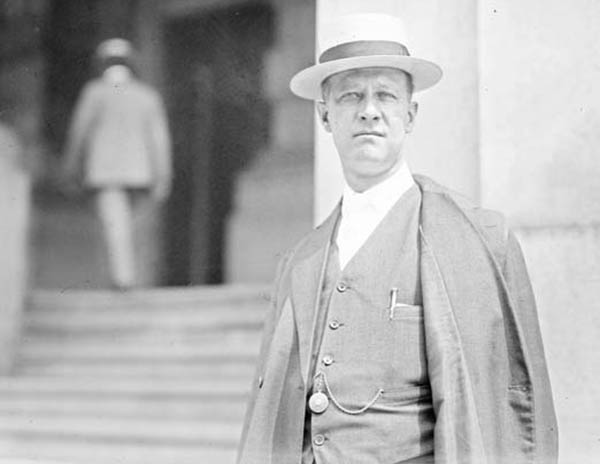When a general strike of 20,000 female garment workers took place in New York City in the winter of 1909, Tammany Hall, the corrupt, Democratic political machine that had controlled the election of most New York officials since the 1860s, was firmly on the side of factory owners and industrialists. After all, Tammany honchos valued the potential campaign donations and bribes from the owners of the city’s 30,000 factories more than the goodwill of the 600,000 struggling workers who toiled in them with few regulations of any kind protecting their welfare.
Tammany had the working class and immigrant vote locked up anyway with its system of patronage and assistance to the needy. While Tammany had been paying lip service to organized labor to neutralize socialist agitators who aired out workers’ grievances, it sent the city’s police force to intimidate and arrest strikers, who were protesting long hours, low pay, and unsafe working conditions. Female strikers, some of whom had instigated the strike, were called “streetwalkers,” and thrown in jail with prostitutes and criminals. Others were beaten on the streets by Tammany-connected thugs.
Yet two products of Tammany, Al Smith and Robert F. Wagner, would spearhead the political fight for reform that would improve working conditions for workers throughout the state, and eventually, the nation. Unfortunately, it took one of New York’s most appalling tragedies to create the political climate for change.
The Triangle Fire
In the late afternoon of Saturday, March 25th, 1911, a lovely spring day in New York City, the Triangle Shirtwaist (blouse) Factory, located in the ten story Asch Building in Greenwich Village, was nearing the end of its long work day. Triangle was notorious amongst garment workers for firing two hundred of its employees who had tried to join the International Ladies Garment Workers Union, and this had contributed to the discontent that sparked the Uprising of the 20,000 in 1909. But on March 25th, most of its five hundred workers, mainly young Italian and Russian-Jewish immigrant women, were just looking forward to the end of their day, only a few minutes away. Shortly before five PM, someone on the eighth floor discarded a cigarette butt in a scrap bin full of fabric remnants.
The eighth floor was a virtual fuel storage tank: tissue paper patterns hanging from wires, tons of fabric, and wooden tables. The Asch Building itself, officially fire proof, was a death trap for workers with many of its doors locked from the outside (to prevent theft and unauthorized bathroom breaks), tons of flammable scrap materials, inoperable fire hoses, and a rickety fire escaped that collapsed, sending workers hurtling to their deaths. As thousands of horrified spectators gathered outside the building, some 46 workers, almost all girls, leapt to their deaths as a hundred more were incinerated inside, many of them piled before the locked exit doors, all within a ghastly thirty minutes.
Naturally there was outrage after the fire, particularly in the immigrant communities which had lost daughters, mothers, and sisters, and there was a demand for the reform of labor and fire safety laws. Both houses of the New York State legislature, however, were in the hands of Tammany Hall politicians traditionally hostile to reform. Reformers had no reason to expect them to take action.
The Tammany Twins
Robert F. Wagner and Al Smith were typical Tammany politicians in many ways. Both were raised in poor, immigrant households. Wagner was German and Smith mainly Irish. Both had worked their way up through the Tammany system from the bottom. While both Wagner and Smith were generally considered sympathetic to the concerns of the working class, they had stood by before and done nothing when Tammany politicians squelched pro-reform legislation at the behest of big business campaign contributors.
In the wake of the Triangle Fire, however, they had experienced a sort of moral and political awakening. The Triangle Fire had laid bare the outrageous indifference many industrialists had toward the lives of their workers. The public reaction to it had illustrated the changing demographics of the city, and demonstrated that Tammany could no longer win elections simply by appealing to the Irish vote.
The Factory Investigating Commission
Public outrage was so great that in June of 1911 the state legislature created a Factory Investigating Commission, and Wagner and Smith became its primary commissioners. Many expected them to bury the inquiry in typical Tammany fashion, but during two months in 1911, the commission sent teams of investigators into some two thousand factories. The investigations went beyond New York City and extended to the state’s nine biggest cities. By 1912 the commission had proposed fifteen new laws on fire safety, factory safety, and the working hours and conditions of women and children, and eight of them were later signed into law. In the next three years, New York passed a record number of laws to protect workers all over the state.
Of course, this was all smart politics for Wagner and Smith. Smith rode the commission into the governor’s office, and Wagner ultimately became the architect of labor laws in the New Deal, extending legal protections to workers all over the country. But it was not just politics for them. As historian Richard Greenwald wrote, “Tammany politicians entered reform, and were changed by it.” And as writer David Von Drehle has pointed out, all the reformers’ ideas would have been so many fantasies without the political acumen of Wagner and Smith.








